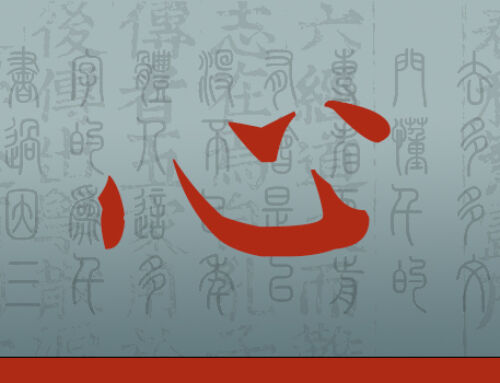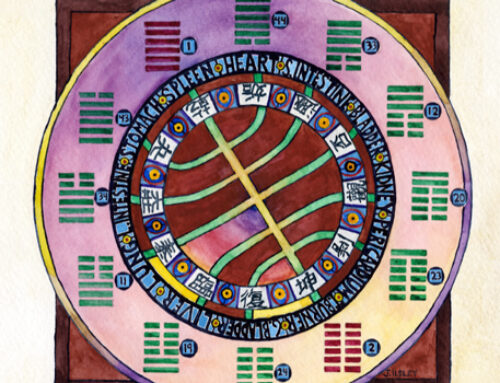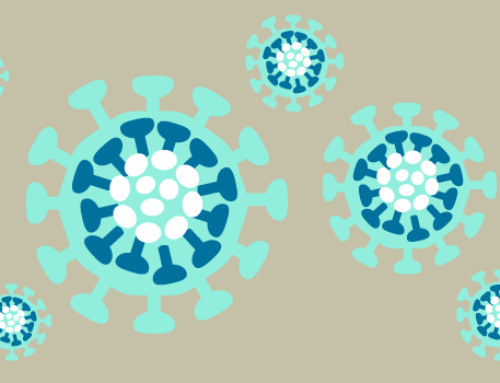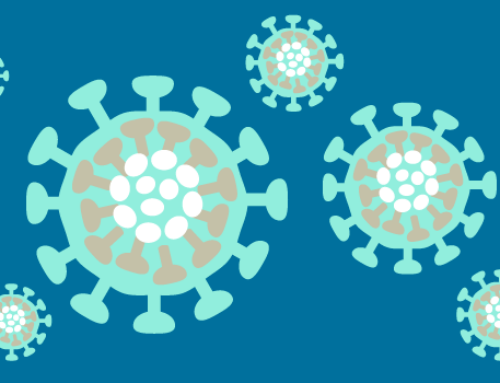By Subhuti Dharmandanda (Institute for Traditional Medicine)
and Heiner Fruehauf (National University of Natural Medicine, College of Classical Chinese Medicine)
In the Western hemisphere, the gingko tree has long been a symbol for the exotic atmospheres of East Asia. More recently, German researchers have tapped into the memory enhancing effect of the gingko leaf, triggering an avalanche of books and articles on the medicinal properties of the gingko. As the Western public becomes increasingly exposed to various gingko products, I would like to take the opportunity and reflect on the rich cultural lore and early medicinal usage that characterize this plant in its country of origin, China.
The Gingko Tree (Yinxing)
The gingko tree is generally recognized as one of the oldest trees in the world. Botanists often describe it as a “living fossil,” since it is a surviving specimen of a stage of plant evolution that was annihilated during the last ice age. Among its unique features is the fact that the gingko blooms only at night and sheds its blossoms immediately, as if celebrating the wonder of life in secret. Another ancient characteristic is its yin-yang quality. As an ancient Chinese botanical treatise notes: “There are male and female gingko trees, and only if the male and female trees are planted together, there will be seeds; or if [the female tree] is planted by the side of a pond where it can reflect itself in the water, there will also be seeds” (see Peng Cheng, “Planting Gingko,” in A Brush Wielding Traveler Capturing Strange Sights [Mo Ke Hui Xi], quoted in An Encyclopedia of Writings and Illustrations From Ancient and Modern Sources [Gu Jin Tushu Jicheng], Chengdu: Bashu Shushe, vol.56, p.67530). The herbal scholar Li Shizhen later emphatically described the same phenomenon and added: “If one drills a hole into the side of a female gingko and inserts a branch from a male gingko, the tree will also generate seeds–does this not illustrate the marvelous workings that result from the attraction of yin and yang?” (see Li Shizhen’s revision of Li Dongyuan’s work, Medicinal Foods [Shiwu Bencao], Zhongguo Yiyao Keji Chubanshe: Beijing, 1990, p.171)
To the ancient Chinese people, however, the gingko was more than just a curious botanical anomaly. Apart from being a manifestation of the sacred concept of yin and yang, the tree was primarily a symbol of longevity and vitality. Most gingkos grow to an imposing height and width during their lifetime, often living for several millennia. Many Daoist temple courtyards feature ancient gingko trees that are thousands of years old, and one particular tree is said to be about 10,000 years old (for a list of ancient gingkos in mainland China, see Ma Wenfei et. al., Interesting Tales About Medicinal Plants [Baicao Yaoyong Quhua], Jiangxi Kexue Jishu Chubanshe, Nanchang: 1994, p. 147-48). In many cases, the trees predate the temple structure and often mark the locale of early shamanic worship. As a mysterious, long-living tree with roots in great antiquity the gingko was an ideal candidate for the practice of shamanic tree worship. Li Shizhen reports that “Daoist shamans used to engrave their magical spells and seals on old growth gingko wood in order to communicate with the spirit world.” (see Medicinal Foods, p.171). Gingko trees, moreover, are known to survive catastrophic events much better than other living organisms. Many of the old gingkos that still exist in China show signs of severe lightening damage but have developed new growth atop their disfigured trunks. Eyewitness reports from post-war Hiroshima and Nagasaki relate that it was particularly gingkos and cockroaches which thrived again soon in areas most affected by atomic bomb radiation.
It therefore appears that within the animistic belief system of a living universe that informed all later schools of Chinese philosophy, science, and religion, the gingko tree was revered as both a symbol of the sacred life force and a living witness to the antedeluvian age of the sages who are said to have laid the foundations of Chinese civilization. It is noteworthy in this context that the gingko’s original Chinese name was Gongsun Tree (gongsun shu). This term relates it specifically to the most illustrious of China’s civilizers, the Yellow Emperor, who is often refered to by his family name, i.e. Gongsun. This legendary figure is generally credited with the systematic study of inner and outer alchemy, yin and yang, the five phases, and other base concepts of Daoist science and medicine.
It is thus perhaps not a coincidence that the modern gingko species appears to have spread over China and the rest of the world from Mt. Qingcheng (Qingcheng Shan), a place that is remembered as a key area of prototypal shamanism and Daoist hermit science. As legend has it, it also marked one of the Yellow Emperor’s prime destinations in his journey compiling the sacred knowlege of his time. It is this mountain range in Southwest China, a sheltered branch of the Eastern Himalayas, that has recently been identified by botanists as potentially the only place where the gingko originally survived the ravages of glaciation and global flooding that accompanied the last ice age (according to a telephone interview with Prof. Wang Chunwu, author of A Chronicle of Mt. Qingcheng and the definitive authority on Mt. Qingcheng’s regional civilization, November 8, 1997).
Drawn by the unique flora and fauna of this region, many scholars have come to Mt. Qingcheng during the last century, including the American botanist E. H. Wilson and the German plant researcher W. Limpricht. Today, international research teams continue to be intrigued by the botanical and geographical features of the mountain, and routinely collect botanical samples from here as well as from nearby Mt. Emei and Mt. Gongga. At the same time, Mt. Qingcheng (“The Lush Thicket Mountain”) draws attention as the birthplace of religious Daoism, where the hermit Zhang Daoling turned his cave into the center of an organized religion in 143 A.D. Meanwhile, the gingko tree, still growing abundantly on the low altitude slopes of Mt. Qingcheng, has become a vital symbol of the cultural and botanical fertility of this region, and perhaps Chinese civilization in general.
One of China’s most famous gingkos is appropriately located in the vicinity of the hermit cave where Zhang Daoling, later called the Heavenly Teacher, once practiced internal and external alchemy and conducted shamanic healing rituals. Said to have been planted by Zhang himself, this tree is estimated to be almost 2,000 years old. By now it has grown to a height of more than 50 meters, a circumference of 706 cm, and a trunk diameter of 224 cm. The tree’s imposing stature is further enhanced by numerous “roots” that seedlings from centuries of falling gingko nuts have grown in the air and that now surround the upper portions of the trunk like stalactites hanging down from the ceiling of a cave. When later generations built a temple around the hermitage, the tree became incorporated into the structure which is still called Cave of the Heavenly Teacher (Tianshi Dong). This tree, China’s gingko of gingkos, has been eulogized by many a traveler, such as the Qing dynasty poet Li Shanji:
In exquisite billows the foliage
Cascades from its shrouded source in the sky,
Green abundance veils the top,
Dwelling place of the lone crane;
Like a dancing phoenix,
Its trunk soars to the clouds,
Like a coiled dragon perching on a cliff
Its invisible qi.
(quoted in Wang Chunwu, A Chronicle of Mt. Qingcheng (Qingcheng Shan Zhi), Chengdu: Sichuan Renmin Chubanshe, 1994, p.14)
Gingko Names
As the symbol of a long and rich history of cultural heritage, the gingko has been given many different names over the ages. Most names refer to either the shape of the leaves or the seeds, or its ancient and aristocratic status among the trees of the Asian continent. In order of familiar usage, Chinese terms for the gingko tree are: Yinxing (Silver Almond Tree), Baiguoshu (White Nut Tree), Yazhangshu (Duck Feet Tree), Gongsunshu (Yellow Emperor Tree), Fozhijia (Buddha’s Fingernail Tree), and Lingyan (Eyes of the Cosmic Spirit Tree).
The gingko’s formal botanical name in China, Silver Almond Tree (yinxing), has been in use since the Song dynasty (10th century). Although the tree’s seeds had long been used by the local populace in Southeastern and Southwestern China as a lung tonic, it was only during the merchant dynasty of the Song that this item began to be treasured by the imperial court and henceforth became included in an official list of tributary items (gongpin). Tributary items represent the most valued agricultural products from each area in China that were ritually “dispatched to the emperor” (gong) every year, such as tea from Mt. Qingcheng, black rice from Hunan, etc. Since the shifting content of the official Chinese materia medica has historically been inextricably connected with the status of each herb at the imperial court, this development brought about an elevation of the gingko seed from unrecorded folk herb status (caoyao) to officially recorded materia medica status (guanyao). Since this time, the gingko’s less fancy common names, Duck Feet Tree (yazhangshu) and White Nut Tree (baiguoshu), took second place to the more “imperial” sounding designation, Silver Almond Tree (yinxing). However, especially the terms White Nut (baiguo) and White Nut Tree (baiguoshu) continue to be used locally as folk and pharmacy names for the tree and its various medicinal parts. Li Shizhen, the Ming dynasty author of China’s definitive materia medica, summarizes the Chinese history of gingko terminology:
The gingko’s leaves look distinctly like duck feet, thus the name Duck Feet Tree. During the Song dynasty, (the seeds) were first declared as a tributary item offered to the imperial court, and henceforth the tree’s name was changed to Silver Almond Tree. This is because its seeds have the shape of small almonds and their shell is white. Today it is commonly called White Nut Tree. (see Medicinal Foods, p.171)
The Western name “gingko” or “ginkgo,” by the way, is an adaptation of the Japanese transliteration of a mix of these terms, namely “gin” (yin: silver) and “ko” (guo: nut).
Gingko Seeds (Yinxing, Baiguo)
In recent times, the gingko is most often identified with its most precious medicinal part, its seed or fruit or nut (semen gingko). Although Li Shizhen has often been recognized as the first scholar to elevate the gingko seed to the level of academic discourse, it was more than two centuries prior to the publication of Li’s authoritative Outline of the Materia Medica (Bencao Gangmu) that the seed had made its debut as a recorded item of the Chinese medicinary. Wu Rui, the officially appointed medical authority in an ancient district close to modern day Hangzhou in Southeastern China, had previously compiled a list of 540 common foods with medicinal properties that included the gingko seed. The work was published in 1367 under the title Materia Medica of Everyday Food Items (Riyong Bencao). Wu practiced and taught in an area that is to this day abundant with gingko trees, and where gingko seeds are routinely stewed with other food items for a variety of health problems. This area is close to a lush, low altitude mountain range similar to Mt. Qingcheng, namely Mt. Tianmu, which Li Shizhen believed to be the original home of the gingko. Although Wu Rui, Li Shizhen, and others agreed that the seed was toxic when consumed in its raw state, the opinions of classical herbal scholars varied on the channel affinity of this medicinal item, including not only the lung channel, but also the heart, bladder, and kidney channels. It was, therefore, the authoritative voice of Li Shizhen that suggested the seed’s classification most accepted by modern scholars and physicians of traditional Chinese medicine: neutral in terms of temperature energetics; sweet (not harmful to the spleen/stomach), bitter (descending), and tart (astringent) in terms of taste energetics; entering the lung in terms of channel affinity; and calming asthmatic wheezing and astringing turbid excretions (from the vaginal and urinary tracts) in terms of pharmacological action. Today, the gingko seed continues to be prescribed regularly by traditional Chinese medicine practitioners around the world, either as a lung tonic stewed with chicken etc., or as a key part of herbal formulas that address asthma, bronchitis, and leukorrhea.
Gingko Leaves (Baiguoye)
Although it is the seed that features most prominently in the Chinese materia medica, both oral tradition and written sources indicate that the medicinal properties of the gingko’s leaves have been utilized just as early and extensively. One indication is the fact that before the seeds were discovered by the imperial kitchen, the gingko’s main name–Duck Feet Tree–was fashioned after the leaves. Furthermore, regional herb usage in Sichuan, Zhejiang, Guangxi, Hebei, Henan, Liaoning and other gingko rich provinces documents that the gingko leaf has been used as a folk herb for a long time. And most importantly, the gingko leaf received a formal entry in the official materia medica commissioned by the Imperial Academy of Medicine almost 500 years ago.
After the gingko seed had been used in imperial circles for five centuries, the Ming dynasty court physician Liu Wentai decided that it was time to elevate the gingko leaf to official materia medica status. In 1505, he finished the compilation of a prolific herbal encyclopedia that for the first time included the gingko leaf and many other folk herbs, i.e. locally used materials that are generally used by themselves and are rarely included in classic formulas. Liu’s work was entitled A Compilation of Essential Items of the Materia Medica (Bencao Pinhui Jingyao) and contained 1,815 entries and 1,358 illustrations. It was one of the declared goals of this herbal primer to correct the apparent discrepancy between the common usage of certain medicinal items and the fact that they had not yet been properly recorded or classified anywhere. As the author stated himself in the preface: “And for those that have been left out from previous books, such as amomum (caoguo), kaempferia (shannai), anis (bajiao huixiang), camphor (zhangnao), smithsonite (luganshi), and other items, separate entries and illustrations have been fashioned. All of these are medicinal materials that are commonly prescribed by physicians, and thus should be properly acknowledged [in the official materia medica].” (see Yan Shiyun, ed., A Comprehensive Study of Chinese Medical Works [Zhongguo Yiji Tongkao], Shanghai: Shanghai Zhongyi Xueyuan Chubanshe, 1992, vol.1, p.1128-29). Unfortunately, Liu Wentai was held responsible for the sickbed death of emperor Xiaozong, and his compilation barred from publication until it was rediscovered in 1926.
The gingko leaf is classified in a very similar fashion to the seed: Its temperature energetics are defined as neutral; its energetic taste as sweet, bitter, and tart; its channel affinity extends beyond the lung into the spleen and stomach; and its medicinal actions are cited as astringing the lungs, calming asthmatic wheezing, and halting diarrhea by transforming dampness. Liu’s original work introduced gingko leaf cookies, baked with a combination of gingko leaf powder and flower, as a remedy for chronic cold damp diarrhea. The official P.R.C. materia medica gives the same indications as listed for the seed, namely phlegm induced asthma, chronic coughing, and leukorrhea (see The Chinese Materia Medica [Zhongyao Zhi], quoted in Ran Xiande, ed., A Sourcebook of Chinese Herbs [Zhonghua Yaohai], Harbin: Haerbin Chubanshe, 1993, vol. 2, p.558). The 1985 Dictionary of the Chinese Materia Medica (Zhongyao Da Cidian), perhaps the most complete of the modern encyclopedias, adds that gingko leaf benefits the heart and treats stuffiness in the chest, angina pectoris, and palpitations. Although this entry seems to be modeled after Western research that heavily emphasizes the circulatory affect of the leaves, experts say that local folk usage has included the heart and brain related indications for centuries (see Wang Chunwu interview). It is possible that the gingko leaf has remained little known as a circulatory herb in China, because the comprehensive blood moving category of the materia medica features so many items that are cheaper, more readily accessible, and deemed more affective for this particular purpose.
Gingko Roots (Baiguogen)
The medicinal properties of the gingko root were first reported in the Sichuan herbal primer, Chongqing Folk Herbs (Chongqing Caoyao). Different from the seed and the leaf, the root is classified as a warm herb that affects the liver and kidney channels. A similar feature to the seed and the leaf, however, is its astringent affect. In particular, the root is described as astringing kidney qi deficiency related turbid discharge from the lower burner, such as spermatorrhea, dribbling urine, and leukorrhea.
To maximize the astringent effect, all three medicinal gingko items are properly harvested in September and October, when the metal qi of nature leaves its condensing and storage promoting energetic imprint on all living organisms. Because of this overriding astringing action, all gingko parts are contraindicated in true excess situations. In order of potency, the seed appears to be the strongest of the three, folllowed by the leaf and then the root. The seed is usually prescribed in amounts of up to 9g, the leaf up to 15g, and the root up to 30g.
This article first appeared in The Journal of Chinese Medicine, March 1998.
You can find more of the work of Subhuti Dharmandanda, PhD, at the Institute for Traditional Medicine.
This cover image is part of the public domain: “Illustration by Siebold and Zuccarini (1835)”.
Ginkgo
By Subhuti Dharmandanda (Institute for Traditional Medicine)
and Heiner Frühauf (National University of Natural Medicine, College of Classical Chinese Medicine)
Available only as a download.
You can find more of the work of Subhuti Dharmandanda, PhD, at the Institute for Traditional Medicine.
This cover image is part of the public domain: “Illustration by Siebold and Zuccarini (1835)”.









[…] Also, eyewitness reports from Hiroshima and Nagasaki where the atom bombs were dropped at the end of the 2nd world war, suggest that only Ginkgo trees and cockroaches were able to survive and thrive in the areas most affected by radiation (1, 2). […]
[…] Interestingly, eyewitness reports point to both Ginkgo trees and cockroaches as the only living things that can survive in areas most affected by radiation from the atom bombs dropped in Hiroshima and Nagasaki (1, 2)! […]